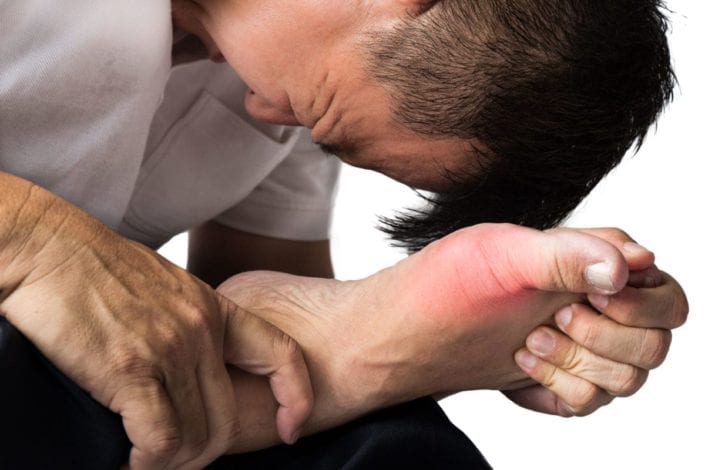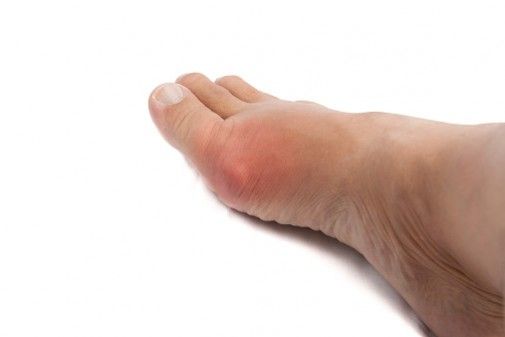What is gout?
Gout is a very painful form of arthritis caused by crystals that form in and around the joints. It’s the most common type of inflammatory arthritis. It’s more common in men and you’re more likely to get it as you get older.
Gout occurs in people who have high levels of urate in their blood, but having urate in your blood doesn’t mean you’ll develop gout. It’s normal and healthy to have some urate in your bloodstream.
Urate is created every day when our bodies break down purines. Purines are chemicals that are naturally created in our body, but they are also present in certain foods.
People used to think that gout was caused by overeating and drinking too much alcohol. While this can make attacks of gout more likely, it’s not the whole story.
In any day, about three-quarters of the urate in our bodies comes from the breakdown of purines produced within our body, while only about a quarter comes from the breakdown of purines in food and drink we consume.
As urate levels build up, your body gets rid of any extra through your kidneys and in your wee. But if your body is making too much urate, or your kidneys are unable to get rid of enough of it, then levels start to rise.
If urate levels stay too high, urate crystals can slowly start forming. They mainly occur in and around firm joint tissues, such as the cartilage. But crystals can also appear under your skin and may even occur in your internal organs, such as the kidneys.
What is a tophus in gout?
A tophus (plural: tophi) happens when crystals of the compound known as sodium urate monohydrate, or uric acid, builds up around your joints. Tophi often look like swollen, bulbous growths on your joints just under your skin.
Tophi are a symptom of gout, a condition where uric acid crystallizes in joints like those in your feet and hands. Gout can cause episodes of severe pain called gout attacks. Without treatment, gout can become a chronic condition and increase your risk of developing tophi and joint damage. Gouty blisters likely form at sites of trauma.
When and why tophi develop
With gout, tophi may not develop right away. Gout consists of four stages:
| Asymptomatic hyperuricemia | You have an abundance of uric acid in your blood (hyperuricemia), but don’t have any visible symptoms. |
| Acute gout | Buildups of uric acid (or crystals) start forming in a joint, which can lead to severe inflammation and pain. This can make your joint warm to the touch (a gout attack). |
| Interval gout (intercritical) | The symptomless stage between gout attacks. This stage can last for a few days or up to several months or years. |
| Chronic tophaceous gout | This is the stage where tophi develop in your joints and the tissues around them. They usually happen if you don’t treat your gout for a long time (about 10 years or more). Tophi may also form in your ears. |
Common locations for tophi
Gout results from uric acid buildup in your blood. Uric acid normally gets removed from your blood through your renal system in urine, but your diet or certain conditions can make it hard for your body to excrete uric acid. In this case, uric acid builds up around joints.
Tophi can form in any of the following body parts:
- feet
- knees
- wrists
- fingers
- Achilles tendon
- ears
Types of tissues where uric acid most commonly builds up to form tophi include:
- tendons that connect joints to muscles
- cartilage around your joints
- synovial membranes that line your joint cartilage
- any soft tissues in your joints, such as fat or ligaments
- bursae, small sacs that create a cushion-like barrier between bones and other soft tissues
Tophi can also form in connective tissue that isn’t found in a joint. Some of these locations include:
- sclerae, better known as the “whites” of your eyes
- renal pyramids, which are triangular-shaped parts of your kidneys made up of ducts and nephrons that help absorb nutrients before releasing waste as urine
- heart valves, such as the aorta (very rarely)






